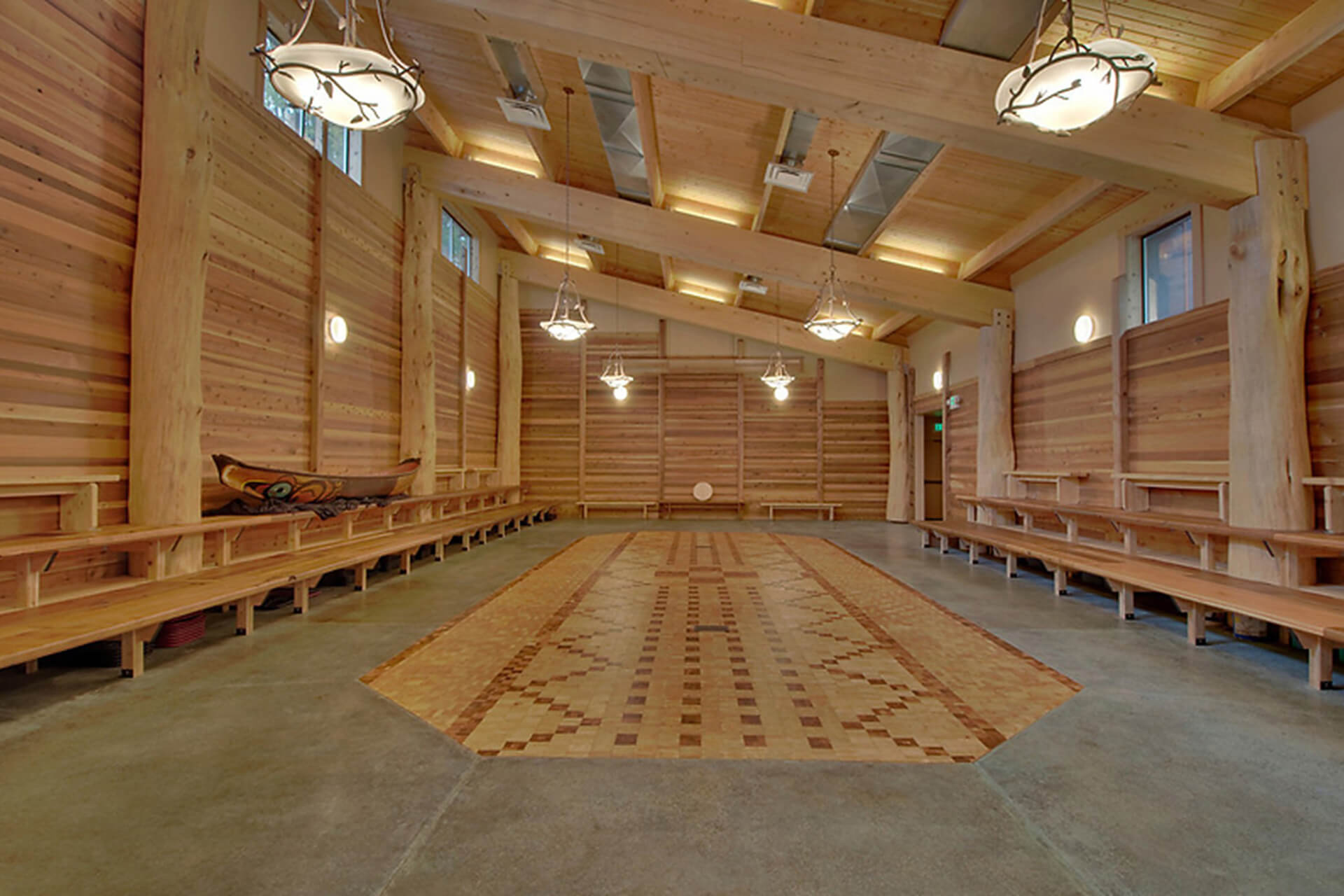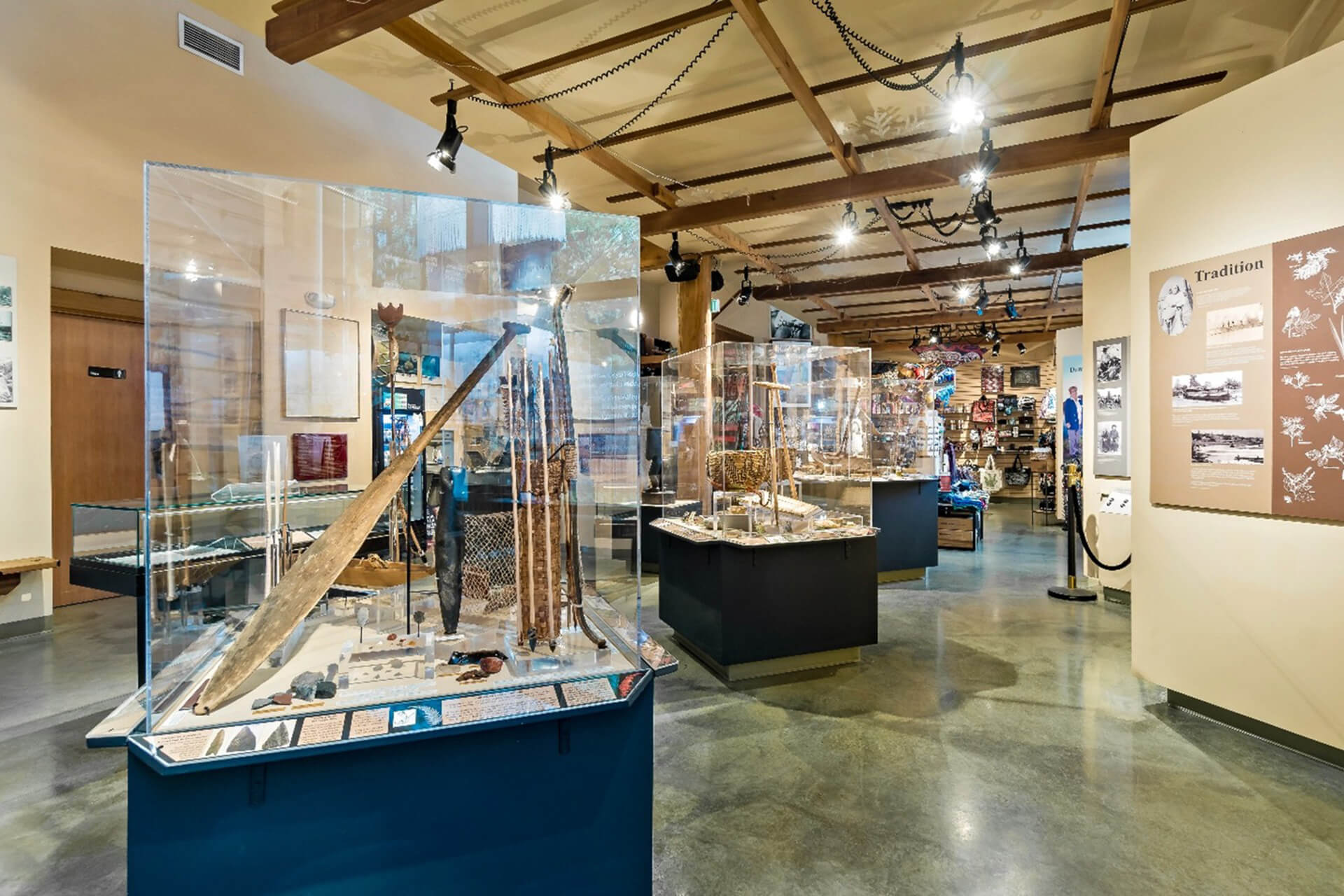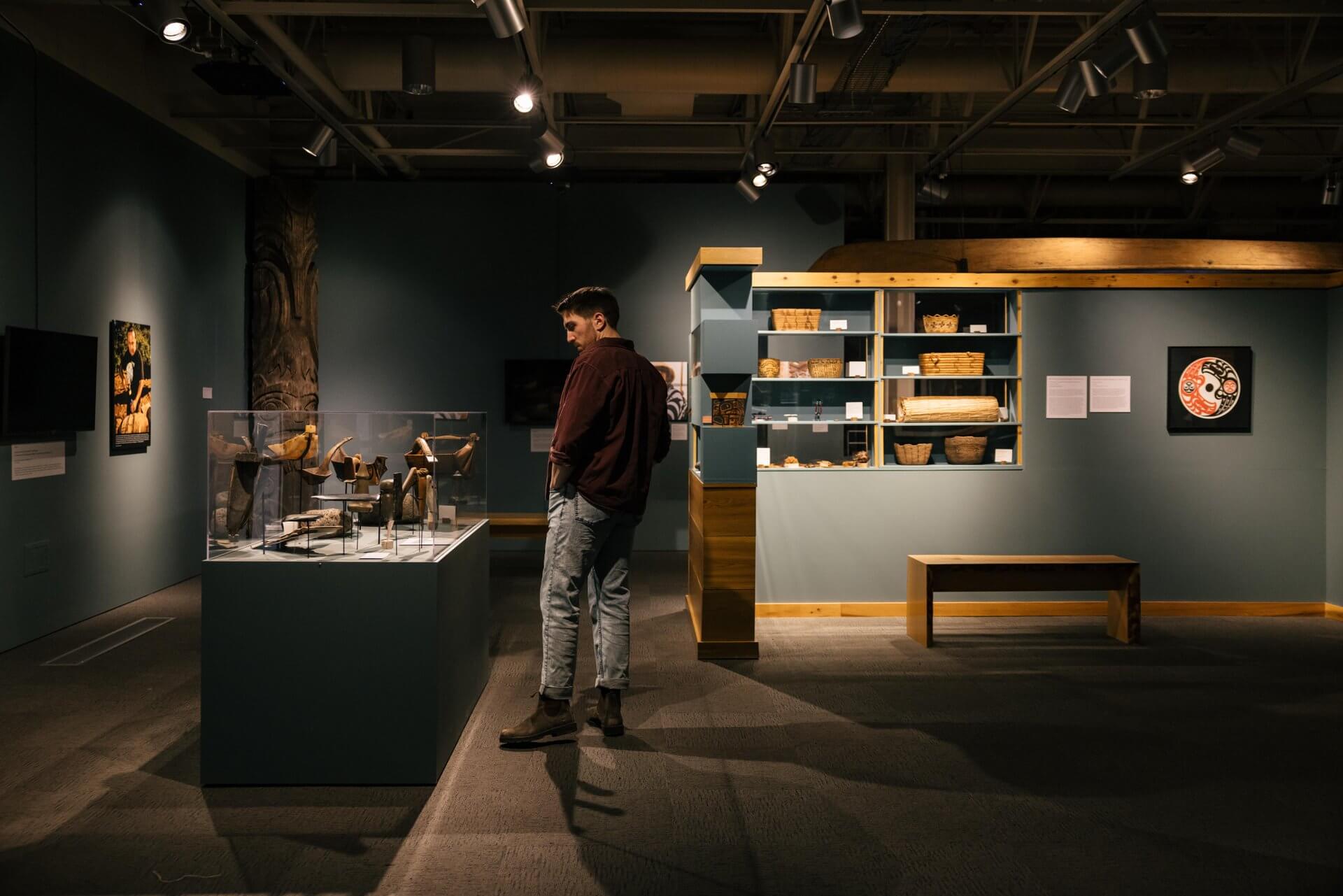Washington State is home to 29 federally recognized tribes—including the Puyallup, Yakama, Tulalip, and Suquamish—as well as several others. Each tribe has its own thriving culture, language, and history, and many continue to share their traditions through tribal museums, cultural centers, art markets, and community events.
From the shores of the Salish Sea to the rolling hills of Eastern Washington, Washington’s lands remain the ancestral homelands of Native communities who have cared for them since time immemorial. Whether you’re hiking in the Cascade Mountains, fishing on the Olympic Peninsula, or camping in a national forest, travel with respect, support Native-owned enterprises, and leave no trace.
Visiting Washington’s Native American Heritage Sites & Events
While the number of Washington tribes is bountiful, it can be challenging for non-Native visitors to find opportunities to interact with them. While not a complete representation, the following list offers a place to start. Expect eye-opening and potentially life-changing experiences when you delve into the tribal customs and cultures of Washington’s tribes.
A few tips to keep in mind when visiting:
- Visitors are generally welcome at museums, public areas of cultural centers, and tribal events held at outdoor venues. By contrast, spiritual ceremonies may not be accessible to visitors. When in doubt, ask if an event is open to the public.
- Always ask for permission before taking photographs or videos of individuals. Do not photograph or film prayers or ceremonies.
- All archaeological sites are protected by law, and artifacts may not be disturbed or removed from public or private lands.
- Practice Leave No Trace principles and other responsible travel practices when recreating outdoors.
Native American Museums & Cultural Centers

While many large-scale non-Native museums can present a one-dimensional view of Native Americans, Native-led museums, exhibits, and programs share a different story. The museums on this list will give you an opportunity to immerse yourself in living tribal cultures.
Burke Museum of Natural History & Culture, Seattle
Six Native American artists from across the Pacific Northwest helped create the inaugural exhibit in the museum’s Northwest Native Art gallery, which includes basketry, carvings, multimedia art, and more. Located on the University of Washington campus in Seattle, visitors can enjoy frybread and other specialties at the on-site restaurant, Off the Rez Café.
Colville Confederated Tribes Museum, Coulee Dam
Located in a stunning building in Coulee Dam, the museum’s permanent exhibits showcase aspects of daily life through the years. Visitors can view contemporary art and historical photos, as well as a dendroglyph (picture tree), which shows a human figure carved into the trunk of a ponderosa pine tree. In 2024, the museum added a section that highlights the ongoing crisis of missing and murdered Indigenous people. The museum is open seasonally from June through September.
Confluence Project, Various Locations
A collaboration between celebrated artist Maya Lin and Pacific Northwest tribes, this six-site art installation spans 438 miles of the Columbia River. Confluence incorporates art, educational programs, and public gatherings to connect people to the history, living cultures, and ecology of the Native people who live along the Columbia River.
Columbia Gorge Interpretive Center Museum, Stevenson

With picture windows peering out onto the Columbia River, this museum in Stevenson recounts the 40-million-year history of the Columbia River Gorge. Visitors can trace the important influence of the area’s First Peoples—Chinookan speaking tribes residing at the mouth of the Columbia River and coast—and admire early baskets and other works of art.
Daybreak Star Indian Cultural Center, Seattle
Daybreak Star Indian Cultural Center is a land base and community center for the Seattle urban Native American community, located on 20 acres atop a bluff overlooking the Puget Sound from Magnolia’s Discover Park. The center includes a permanent art collection and events, such as the Seafair Indian Days Powwow, and is home to the United Indians of All Nations and the Sacred Circle Gifts and Art shop.
Elwha Klallam Museum at the Carnegie, Port Angeles
Located in Port Angeles and managed by the Lower Elwha Klallam Tribe, what was once the Carnegie Museum is now used to showcase the tribe’s culture and history. Check out the exhibits on the Elwha River Dam Removal project—the largest in US history—and artifacts from the ancient tribal village č̕ixʷícən. Open by appointment.
Makah Cultural & Research Center / Makah Museum, Neah Bay
Nestled in Neah Bay on the tip of the Olympic Peninsula, the Makah Cultural and Research Center houses 300–500-year-old artifacts recovered from the Ozette archaeological site along with Makah masks, baskets, carvings, and jewelry.
Duwamish Longhouse & Cultural Center, Seattle


Explore the lesser-known history of Seattle at the Duwamish Longhouse & Cultural Center, which explore the cultural significance of the Duwamish Tribe. View a traditional cedar post longhouse, visit the Spirit Returns 2.0 exhibit for handwoven cedar baskets, tools, beadwork, and photographs, or explore the nearby həʔapus Village Park & Shoreline Habitat, a tranquil green space along the river.
Eighth Generation at Pike Place Market, Seattle
Find Native-made gifts at Eighth Generation’s flagship store in Seattle’s iconic Pike Place Market. Owned by the Snoqualmie Tribe, the store was founded in 2008 by artist and activist Louie Gong (Nooksack). Today, Eighth Generation provides 100% Native-designed products including blankets, apparel, art, soaps, jewelry, and more.
Lelooska Foundation & Museum, Ariel
At this cultural center southwest of Mount St. Helens, the Lelooska Foundation highlights the diversity of Native Peoples in North America. The collection includes everything from baskets and dolls to moccasins, dresses, and even a 15-foot birch bark canoe. On select dates, visitors can attend evening performances. Currently open by appointment Tuesdays and Thursdays.
“House of Welcome” Longhouse Education and Cultural Center, Olympia
The “House of Welcome” Longhouse at Evergreen State College is the first longhouse on a public college campus. Built in 1995 through a massive collaborative community effort, the longhouse hosts potlatches, workshops, performances, events, and art. Check their Facebook page for more information on events.
Whatcom Museum, Bellingham

A permanent exhibit in the museum’s Lightcatcher Building, People of the Sea and Cedar centers the voices and cultures of the Lummi Nation and Nooksack Indian Tribe to tell the story of the Coast Salish peoples. The exhibit was created with input from Tribal representatives and features basketry, artwork, photographs, and first-person storytelling.
Northwest Museum of Arts & Culture, Spokane
Learn about the Native cultures influencing the northeast corner of the state, from the Indigenous northern Plateau Indians to Spokane’s 1925 National Indian Congress, a huge event to designed to market the city of Spokane. This museum houses one of the foremost collections in the country, with more than 5,000 items.
Shoalwater Bay Museum, Tokeland
This small museum in Tokeland in southwest Washington highlights the Shoalwater Bay Tribe’s connection to the sea and community. Cultural exhibits include a cedar dugout canoe and a recreation of a tribal headdress.
Skokomish Tribal Museum, Hood Canal
Learn about the Skokomish—one of the nine communities of Twana Indians, a Salishan people—through their carvings, baskets, and paintings. Open by appointment only.
Squaxin Island Tribe Museum Library and Research Center, Shelton
This exquisitely designed center features a beautiful water display at its entrance, along with exhibits on Squaxin Island history and culture, a public library, and a gift shop.
Steilacoom Cultural Center and Museum, Steilacoom
South of Tacoma and located in a former church, this cultural center displays art and information on the Steilacoom people, as well as traveling exhibits, a gift shop, and the Fry Bread Café. Note: As of October 2025, the cultural center is temporarily closed for construction. Check the center’s website for hours and updates.
Wanapum Heritage Center, Mattawa
Nestled along the banks of the Columbia River near the Priest Rapids Dam east of Yakima, the extensive center includes 10,000-square-feet of permanent exhibit space, a library, and space for culture programs. Each year, the tribe and local PUD host Archaeology Days complete with lectures and demonstrations on basket weaving, beadwork, flint knapping, and more.
Suquamish Museum, Suquamish

Amid towering trees on the Kitsap Peninsula, this LEED Gold–certified museum traces the Suquamish history back to the last ice age. Admire baskets, carvings, artifacts, and a gift shop. Afterward, pay respects at Chief Seattle’s gravesite only a few blocks away. Chief Seattle (1786–1866) was a Suquamish and Duwamish chief who is best known for a speech he gave on Native rights and environmental values.
Hibulb Cultural Center and Natural History Preserve, Tulalip
Located on a 50-acre preserve just north of Everett, the center tells the story of the Tulalip Tribes and features historic canoes, a longhouse, a gift shop, and exhibits labeled in both English and Lushootseed, the Coast Salish language.
Quinault Tribal Museum and Cultural Center, Taholah
This cultural center along the Pacific Coast of the Olympic Peninsula is home to a collection of baskets, carvings, and cultural exhibits. The center tells the story of the Quinault Indian Nation, which consists of descendants of the Quinault, Queets, Quileute, Hoh, Chehalis, Chinook, and Cowlitz people.
Yakama Nation Museum and Cultural Center, Toppenish
From traditional garb to life-size dwellings of the Plateau People, the history of Yakama Nation’s various tribes is on display at this 12,000-square-foot museum in the Yakima Valley. The campus is a unique facility that includes the Yakama Nation Museum, Cultural Center Gift Shop, Heritage Theater, Yakama Nation Library, and the Winter Lodge.
Native American Cultural Events
If you want to experience Native cultural dance, music, and art, check out these cultural events that are open to the public. Plan to experience vividly colorful dance regalia, deeply spiritual ceremonies, and drums that mimic the beat of one’s heart.
First Salmon Feasts, Spring
Tribes throughout the Pacific Northwest hold their own First Salmon Feasts at the start of fishing season. As the salmon move upriver, so do the feasts. Contact individual tribes for information about dates and locations (scroll down for a list of tribes).
Indigenous People Festival, June
This festival occurs in June and is part of the Seattle Center Festál series. Gather together with Native community members to enjoy a powwow, Native art market, music, dance performances, and a cultural celebration.
Lummi Nation Stommish Water Festival, June
Every June, this celebration of Coast Salish culture includes war canoe races and a traditional salmon barbecue on the Lummi reservation near Bellingham.
Seafair Indian Days Powwow, July
Come enjoy hundreds of dancers in handcrafted regalia and several powerful drum groups in a celebration of Native American cultures at Daybreak Star Indian Cultural Center.
Chief Seattle Days, August
Join this historic celebration held each year by the Suquamish. This multi-day event includes traditional dancing, canoe races, Native art, and a ceremony honoring Chief Seattle.
Omak Stampede, August
This annual event stampedes into Omak with rodeo events—including the world-famous suicide race—and the Colville Confederated Tribes’ Indian Encampment and Pow Wow, featuring a teepee village and dancing.
Tribal Canoe Journeys, Summer
Each summer, tribal canoe families gather to journey the waters from the confluence of the Columbia and Willamette rivers in Oregon to the Lummi Nation in Washington. There is a launching ceremony and a week-long culminating celebration.
United Indians Native Art Market, November and December
Just in time for the holidays, the United Indians Native Art Market at the Daybreak Star Indian Cultural Center in Seattle features authentic Native American jewelry, crafts, food, prints, artwork, and baskets that make perfect gifts.
FAQs About Washington’s Native American Heritage
How many Native American tribes are in Washington State?
Washington State has 29 federally recognized tribes, including the Makah, Puyallup, Swinomish, and Yakama, as well as a handful of those without federal designation, such as the Wanapum Band of Priest Rapids and the Duwamish Tribe.
Which Native American museums are good for kids and families?
Many Native American museums and cultural centers in Washington have an interactive component suitable for kids. Explore hands-on exhibits at the Hibulb Cultural Center in Tulalip, where kids can touch natural materials, or check out full-size dwellings at the Yakama Nation Museum in Toppenish.
Are non-Native visitors welcome at tribal museums and events?
Most tribal museums, cultural centers, and public community events welcome respectful visitors. Always ask before taking photos, and check individual websites for visitor guidelines. By contrast, spiritual ceremonies are often not accessible to visitors. When in doubt, ask.
Where can I find authentic Native art and gifts in Washington?
Shop directly from Native artists at Native-owned galleries and Eighth Generation in Seattle or at museum gift shops. The United Indians Native Art Market at Seattle’s Daybreak Star Indian Cultural Center each winter also features jewelry, carvings, and prints from Native artists.
How can visitors support Native communities in Washington?
Visitors can support Native communities by shopping at Native-owned businesses, staying at tribally owned lodging and casinos, and respecting outdoor spaces by following Leave No Trace principles to help preserve cultural and natural resources.
Find more information about federally recognized tribes here: Chehalis, Colville, Cowlitz, Hoh, Jamestown S’Klallam, Kalispel, Lower Elwha Klallam, Lummi, Makah, Muckleshoot, Nisqually, Nooksack, Port Gamble S’Klallam, Puyallup, Quileute, Quinault, Samish, Sauk-Suiattle, Shoalwater Bay, Skokomish, Snoqualmie, Spokane, Squaxin Island, Stillaguamish, Suquamish, Swinomish, Tulalip, Upper Skagit, Yakama.
About the Author
Leah Altman is Oglala Lakota and was raised in the Portland area. She has written for several publications including Portland Monthly, Oregon Humanities, Parents.com, and Indian Country Today. She has also worked for Native and BIPOC-led environmental and community organizations and is finishing her first book, a memoir-in-essays about finding her birth family.
